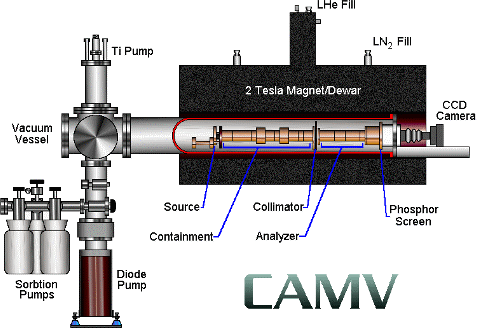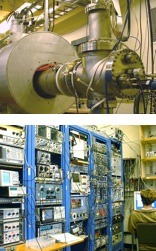


The CAMV electron apparatus was designed and constructed to enable CCD ( charge-coupled device ) camera images of the two-dimensional flows which cause rapid cross-field transport of particles and energy. The apparatus is ideally suited to studies of 2D fluid instabilities, turbulence, and relaxation, in both effectively inviscid and viscous regimes.


CAMV is essentially a Penning trap with a CCD camera attached to one end. Electrons are emitted from a tungsten filament source located at the opposite end from the camera. The electrons are attracted into the containment section by a positive potential at the collimator end, where they are contained radially by a magnetic field and axially by negative potentials at the collimator end and the source end.
While in the containment section, the behavior of the plasma can be influenced by asymmetrical potentials on some of the electrodes. For instance, a plasma with an m=1 diocotron (MPEG) mode can be created. The plasma is contained until it reaches an interesting point in its development, whereupon it is allowed to escape through the analyzer. After passing through the analyzer, the electrons in the plasma collide with a phosphor screen. The resulting light is imaged by the camera.